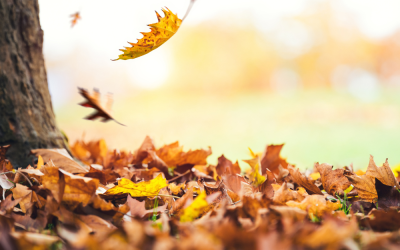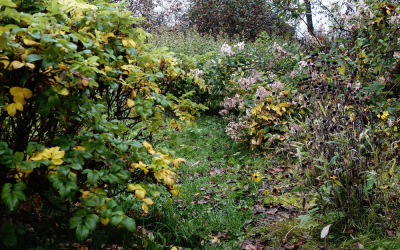Trees cover a diverse range of different species ranging from acacia to Irish yew – but they tend to fall into only two categories, depending on the climate they grow in. Evergreens (such as the coniferous Douglas Fir and spruces we might decorate with during the holidays, or tropical trees like palms) are hardy trees that do not shed their leaves during winter.
Definition of a Deciduous Tree
The other type are the ones we commonly notice around autumn – this category of tree instead sheds its leaves once the temperatures drop in order to conserve energy. Trees in this group go by many names including oak, maple and sycamore – but they are all known as deciduous trees. But what is a deciduous tree – and why do they lose their leaves?
What Are Deciduous Trees?
While the word “evergreen” is easily explained, the word deciduous is a little harder – unless you are familiar with your Latin verbs. The word itself, loosely translated from Latin means: “to fall away at maturity”, and is generally taken to mean something which is shed once no longer needed.
Deciduous trees are easy to spot – their main characteristic being the leaf-shedding which occurs in autumn. This biomechanical function (known as abscission) helps to protect the tree in a number of ways.
In winter, trees lose their leaves in order to conserve energy and to protect themselves from wind damage. In Spring, the process also helps to make room for new springtime growth in addition to allowing pollen to flow more freely through its branches.
Top Tip!
Don’t just sweep fallen leaves away: if left to compost, you can turn them into leaf mould, which can help to condition soil or mulch, according to the Royal Horticultural Society. Here is a guide on how to do this.
What Do Deciduous Trees Look Like?
Deciduous trees come in a variety of sizes. The majority grow in a curved shape with spreading branches and wide, flat leaves. Some trees (typically fruiting ones) develop blossom in the springtime which then develops into seeds and fruit.
Once summer has ended, leaf shedding begins. As this occurs, deciduous trees no longer need to supply chlorophyll to their leaves (which is what gives them their green colour). As this is removed, the leaves change in colour from green to varying shades of brown, yellow, orange and (in the case of maple leaves) red.
In certain areas of the United States, where there are significant differences between winter and summer temperatures, leaf colours tend to be brighter and more varied. The exact reasoning for this varies – with some suggesting brighter colours were an evolutionary process designed to ward off insects during the Ice Age.
Where Do They Grow?
Deciduous forests can be found in various locations all over the world – all with their own unique understory growth, ecosystems and soil dynamics. In tropical and subtropical climates leaf drop is not as dependent on the seasons, tending only to occur during long dry spells to help preserve the tree.
Temperate deciduous forests can be found across Europe, North and South America, Southern slopes of the Himalayas and (where they are grown for cultivation), Oceana. All of these places tend to have colder, wetter winters and warmer summers that allow the tree to follow its natural cycle of a shedding and growing season.
What Types of Deciduous Tree Are there In The UK?
Deciduous trees are more common than evergreens worldwide: in the UK only five native evergreens exist: yew, Scots pine, Juniper, holly and box (more tend to grow in places like Scotland where the winters are colder).
By comparison, there are over fifty different kinds of deciduous tree growing in the UK. The ones you are most likely to see include silver birches, Common (or European) Ash (Fraxinus Excelsior) hawthorn, (Crataegus monogyna) and the Rowan tree (Sorbus aucuparia). Arguably the most well-known is the iconic oak tree.
English oak (quercus robur)
Often found in Southern and Central England, the English Oak is identifiable by its distinctive, oblong leaves with their waved pattern around the edges. You may also see acorns – however, these are only visible on older trees (oaks take up to 40 years to produce them). Much like rowan and yew trees, many oaks are classed as ancient owing to their extensive lifespans.
This tree type is capable of growing up to 40 metres tall – although it may slightly stunt itself over the course of its life span to conserve energy and survive longer. The UK has over 121 million oaks growing in woodland – but one of the oldest (an impressive 750 years old) can be found in an urban area: Richmond Park, London.
Contact Us
If you need help with your trees, speak with one of our tree surgeon Manchester specialists today who can help.



